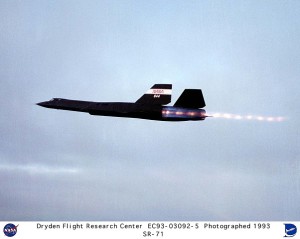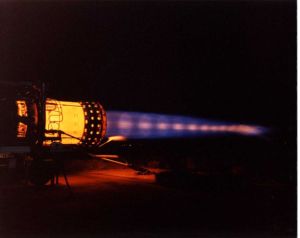The terms listed below are those which are usually used in electronic eng. especially Aerospace Electronic; completely taken from: The Clemson University Vehicular Electronics Laboratory(http://www.cvel.clemson.edu/aero/tutorials/definitions.html) with little changes. I hope you could find the terms you are looking for,
ABS - Antilock Brake System
A mechatronic system that senses when the wheels are skidding during braking and pulses the brake pressure to allow the wheels to turn just enough to maintain control of the car.
AF - Antenna Factor
The ratio of the received field strength to the voltage appearing at the terminals of a receiving antenna OR the ratio of the transmitted field strength at a specified distance to the voltage applied to the terminals of a transmitting antenna. Antenna factors are functions of position and frequency.
ALSE - Absorber-Lined Shielded Environment
An EMC test environment consisting of a shielded room with material on the walls and ceiling that absorbs electromagnetic radiation.
ARINC - (originally) Aeronautical Radio, Inc
Now officially called ARINC Incorporated, this company is an aerospace industry contractor. Among other things, they develop and maintain a variety of aerospace electronics standards.
ASIC - Application Specific Integrated Circuit
An integrated circuit that designed and built for a specific application, usually in a specific product or product line.
BCI - Bulk Current Injection
A type of EMC test where common-mode currents are induced on the power and communications cables of the device under test.
CAN - Controller Area Network
A common network protocol used in automotive applications. CAN buses employing twisted wire pairs were specifically designed to be robust in electromagnetically noisy environments. The applications of CAN bus in automobiles include window and seat operation (low speed), engine management (high speed), brake control (high speed) and many other systems. CAN buses can also be found in other embedded control applications such as factory automation, building automation, and aerospace systems.
CENELEC - European Committee for Electrotechnical Standardization
CENELEC’s mission is to prepare voluntary electrotechnical standards (including EMC standards) that help develop the Single European Market/European Economic Area for electrical and electronic goods and services removing barriers to trade, creating new markets and cutting compliance costs.
CISPR - Committee on Special International Committee on Radio Interference
CISPR is an international organization concerned with developing standards for detecting, measuring and comparing electromagnetic interference in electric devices.
CMOS - Complementary Metal Oxide Semiconductor
A semiconductor fabrication technology characterized by relatively low quiescent power consumption capable of very high speed switching. Most digital semiconductor devices in an automobile including all of the microprocessors and microcontrollers are CMOS devices.
CPU - Central Processing Unit
The part of a microprocessor or microcontroller that does the arithmetic computations.
DSP - Digital Signal Processor
A microprocessor optimized to digitize analog signals and process the signal information.
ECM - Engine Control Module
An electronic module that controls the operation of an internal combustion engine including the throttle, fuel injection and spark timing.
ECU - Electronic Control Unit
The device in an automotive electronic system that controls the operation of the system. A typical automobile will have dozens of ECUs.
EEPROM - Electrically Erasable Programmable Read only Memory
Electronic memory devices that keep information stored even without power, but can be erased and reprogrammed electrically.
EMC - Electromagnetic Compatibility
The ability of an electronic device or system to function without error in its intended electromagnetic environment.
EMD - Electromagnetic Disturbance
Any electromagnetic phenomenon that may interfere with the normal function of an electronic device.
EMI - Electromagnetic Interference
The disruption of an electronic device or system due to an electromagnetic phenomena.
EMP - Electromagnetic Pulse
Strong electromagnetic transients such as those created by lightning or nuclear blasts.
ESD - Electrostatic Discharge
A sudden surge in current usually due to an electric spark or dielectric breakdown characterized by risetimes less than one nanosecond and total pulse widths on the order of microseconds.
EUROCAE - European Organisation for Civil Aviation Equipment
EUROCAE is a non-profit organization whose members are aviation stakeholders including Manufacturers (aircraft, airborne equipment, ATM systems and ground equipment), Services Providers, National and International Aviation Authorities and Users (Airlines, Airports, operators) from Europe and elsewhere.
EUT - Equipment Under Test
The device being evaluated by an EMC test (see also DUT).
EW - Electronic Warfare
A battle strategy that involves disabling an enemy's electronic communications or controls, usually by generating an interfering signal or electromagnetic pulse with sufficient energy to damage electronic circuits.
FADEC - Fully Automatic Digital Engine Controller
The computer that controls all aspects of an aircraft engine's performance (piston or jet engines).
FFT - Fast Fourier Transform
An algorithm for quickly calculating the frequency-domain representation of a time-domain signal.
HEMP - High-altitude Electromagnetic Pulse
Strong electromagnetic transient field that is created by a nuclear device discharged high in the atmosphere (also sometimes referred to as NEMP or Nuclear Electromagnetic Pulse).
ICM - Ignition Control Module
The electronic control for the ignition system.
IEC - International Electrotechnical Commission
The IEC is an international organization that prepares and publishes international standards (including many EMC standards) for all electrical, electronic and related technologies.
IEEE - Institute of Electrical and Electronics Engineers
IEEE is the world's leading professional association for the advancement of technology. The IEEE name was originally an acronym for the Institute of Electrical and Electronics Engineers, Inc. Today, the organization's scope of interest has expanded into so many related fields, that it is simply referred to by the letters I-E-E-E (pronounced Eye-triple-E).
ISO - International Organization for Standardization
ISO is a network of the national standards institutes of 157 countries, one member per country, with a Central Secretariat in Geneva, Switzerland, that coordinates the system.
LED - Light Emitting Diode
A light source of growing importance to the automobile industry. LEDs are more efficient and more durable than incandescent light sources.
LISN - Line Impedance Stabilization Network
A passive, two-port network that is placed between the power supply and the power input of equipment under test. It passes power to the equipment while providing a known high-frequency impedance. Test equipment for measuring the voltage on the power supply lines is connected directly to the LISN.
LTCC - Low Temperature Cold Fired Ceramic
A microelectronics packaging technology particularly well suited for wireless and high-frequency applications.
MEMS - MicroElectro-Mechanical System
Tiny electro-mechanical devices etched in silicon. MEMS technology is used to make a variety of sensors used in automobiles. MEMS sensors are small, rugged and low-cost in high volumes.
MOST - Media Oriented Systems Transport
A network protocol employing optical fiber used in entertainment applications.
NASA - National Aeronautics and Space Administration
NASA is the agency that oversees the U.S. space program.
NEMP - Nuclear Electromagnetic Pulse
Strong electromagnetic transient field that is created by a nuclear device discharged high in the atmosphere (more commonly referred to as HEMP or high-altitude Electromagnetic Pulse).
OATS - Open Area Test Site
An EMC test environment free of reflecting objects except a ground plane.
PCB - Printed Circuit Board
A board consisting of layers of copper connections separated by a fiberglass resin or ceramic dielectric. Electronic components are usually mounted on the top and/or bottom of the board.
PWM - Pulse Width Modulation
A technique for regulating the amount of energy conveyed in a digital (on/off) signal by regulating the width of pulses that are transmitted at a given frequency.
RADAR - RAdiation Detecting and Ranging
A technology that relies on the reflection of electromagnetic signals to determine the distance and velocity of far away objects.
RAM - Random Access Memory
Electronic digital memory that can be accessed by providing a specific address for the information desired.
RCS - Radar Cross Section
A measure of the strength of a radar signal reflection from an object. RCS is an indication of the range at which an object can be detected by radar.
ROM - Read Only Memory
Electronic digital memory that can be read, but not rewritten or erased.
RF - Radio Frequency
A frequency at which electromagnetic radiation of energy is useful for communications. Radio frequencies are designated as very low: 3 kHz to 30 kHz, low: 30 to 300 kHz, medium: 300 to 3,000 kHz, high: 3 to 30 MHz, very high: 30 to 300 MHz, ultrahigh: 300 to 3,000 MHz, super high: 3 to 30 GHz, and extremely high: 30 to 300 GHz.
RTCA - Radio Technical Commission for Aeronautics
RTCA, Inc. is a private, not-for-profit corporation that develops consensus-based recommendations regarding communications, navigation, surveillance, and air traffic management (CNS/ATM) system issues.
TEM - Transverse ElectroMagnetic
An electromagnetic plane wave where the electric and magnetic fields are perpendicular to each other everywhere and both fields are perpendicular to the direction of propagation. TEM cells are often used to generate TEM waves for radiated immunity (RI) testing.
SAE - Society of Automotive Engineers
A professional society for automotive and aerospace engineers. Formerly, SAE was an acronym for the Society of Automotive Engineers. Now, the society is officially called SAE International.
SMD - Surface Mount Device
An electronic component with no leads that is glued to a printed circuit board, then wave-soldered. Also called SMT devices (for Surface Mount Technology).
UAV - Unmanned (or Uninhabited) Arial Vehicle
An aircraft that is controlled remotely (or by program) without any human occupants.
XTALK - Crosstalk
A measure of the electromagnetic coupling from one circuit to another.







.jpg)

